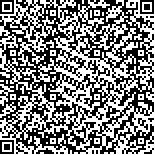| This article has been:Browse 1488Times Download 2441Times |

scan it! |
|
|
| DOI:10.13522/j.cnki.ggps.2020373 |
|
| The Effects of Irrigation and Biochar Amendment on Yield and Water and Nitrogen Use Efficiency of Winter Wheat |
|
LIU Jieyun, QIU Husen, ZHANG Wenzheng, CAI Jiumao, WANG Xiaosen, LYU Mouchao
|
|
1. Key Laboratory of Water-saving Agriculture of Ministry of Agriculture and Rural Affairs,Farmland Irrigation Research Institute, Chinese Academy of Agricultural Sciences, Xinxiang 453002, China;2. School of Environment and Surveying Engineering, Suzhou University, Suzhou 234100, China
|
| Abstract: |
| 【Background and Objective】The dwindling water resources in north China over the past decades has called for improving irrigation water use efficiency and reducing groundwater extraction, especially for winter wheat whose production largely relies on irrigation. While various water-saving irrigation technologies have been developed and tested, how agronomic management can help improve water use efficiency remains absurd. The purpose of this paper is to investigate the efficacy of biochar amendment coupled with different irrigations to improve soil structure and boost winter wheat yield.【Method】The experiment was conducted from October 2018 to June 2019 in a field in central China. It consisted of four irrigations: flooding, drip, sprinkler and micro-sprinkler irrigations. Added to each irrigation were three biochar amendments at rates of 0, 10 t/hm2 and 20 t/hm2 respectively. All treatments were randomly arranged in the field. In each treatment, we measured the yield and yield traits, irrigation water use efficiency and apparent nitrogen fertilizer use efficiency of the wheat.【Result】Neither irrigation method nor biochar amendment showed noticeable effects on stem height and root length. Using 50% of the water used in flooding irrigation, drip irrigation, sprinkler irrigation and micro-sprinkler irrigation all reduced grain yield though not at significant level (p>0.05). Drip irrigation reduced straw yield but increased harvest index of the wheat. In contrast, sprinkler irrigation reduced grain numbers per ear and increased the ratio of defect grains, resulting in yield reduction. Biochar amendment did not show significant effect on irrigation water use efficiency and apparent nitrogen fertilizer use efficiency (p>0.05). Compared with flooding irrigation, drip, sprinkler and micro-sprinkler irrigations reduced the apparent nitrogen fertilizer use efficiency although the difference between them was not significant (p>0.05). Compared with flooding irrigation, drip irrigation, sprinkler irrigation and micro-sprinkler irrigation increased irrigation water use efficiency by 42.79%, 39.09% and 47.71% respectively (p<0.05). Amending the soil with biochar coupled with drip, sprinkler or micro-sprinkler irrigation increased water use efficiency, compared with its coupling with flooding irrigation (p<0.05). Biochar amendment did not significantly affect grain yield, irrigation water use efficiency and apparent nitrogen fertilizer use efficiency (p>0.05), probably due to the low amending rate.【Conclusion】Using 50% of the water used in flooding irrigation, drip, sprinkler and micro-sprinkler irrigations did not comprise grain yield. Considering plant growth, grain yield and irrigation water use efficiency, drip irrigation coupled with biochar amendment is a more suitable agronomic practice for winter wheat in north China. |
| Key words: irrigation method; biochar amendment; winter wheat yield; irrigation water use efficiency; apparent nitrogen use efficiency |
|
|